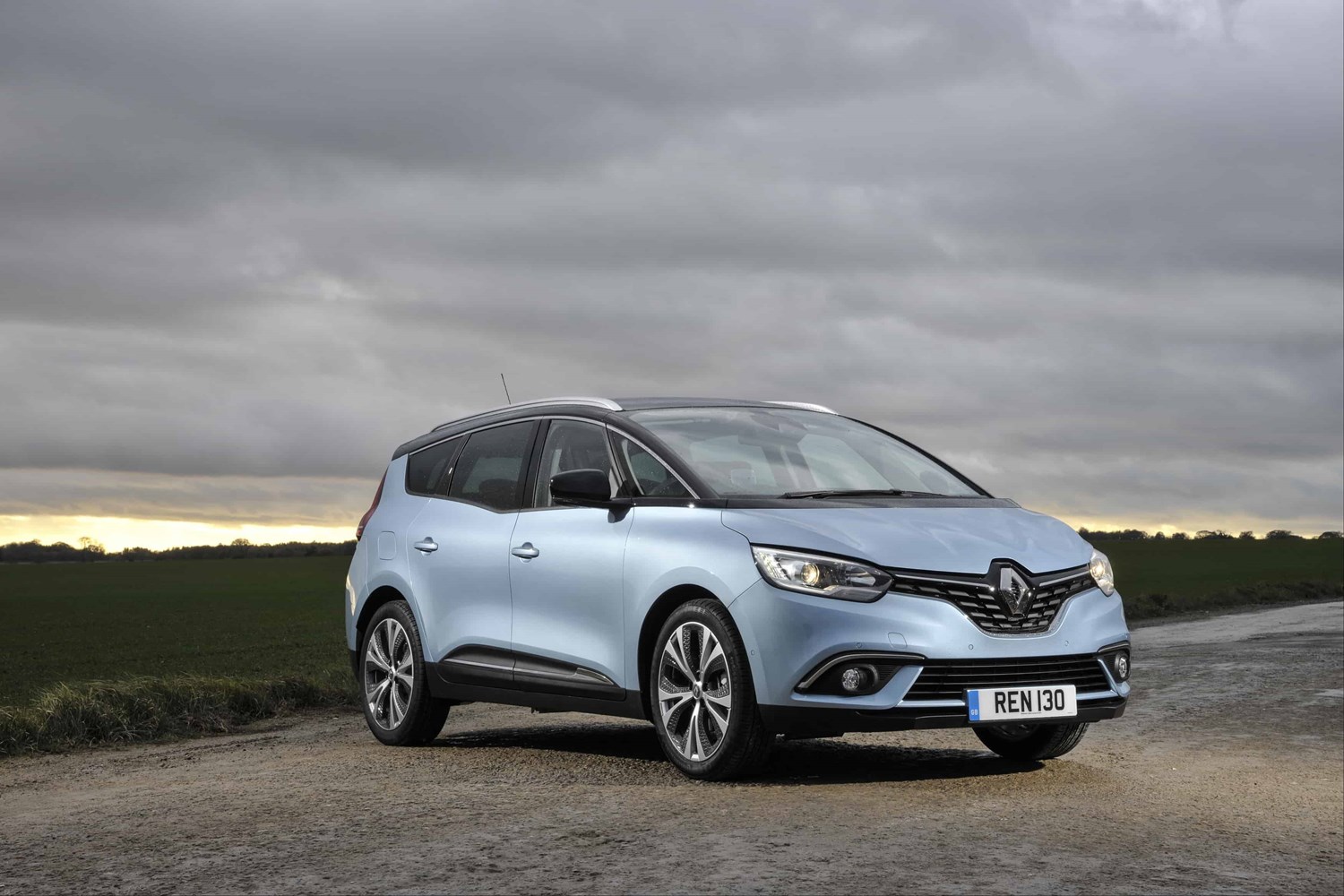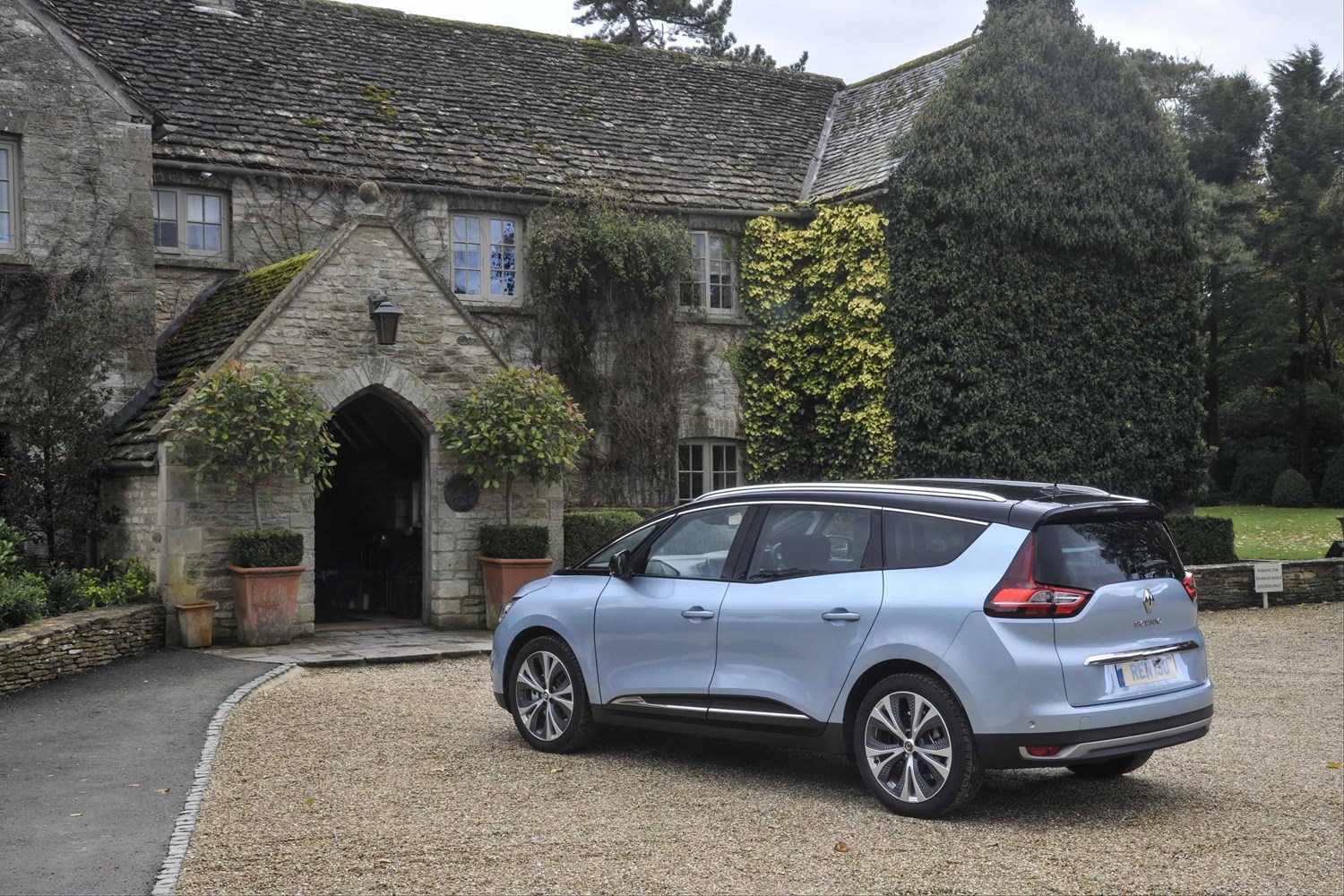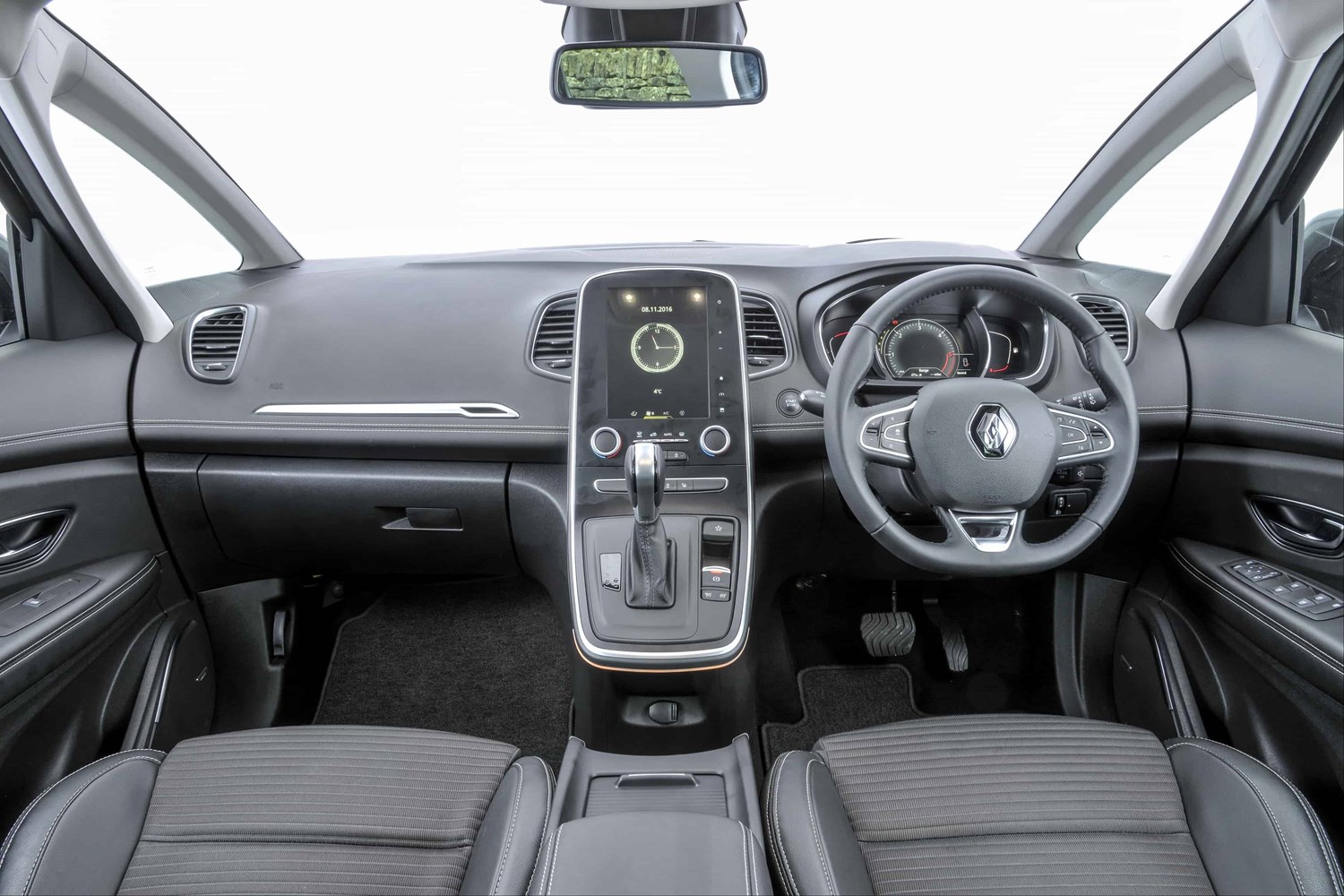Space and practicality
Renault has been very clever to balance the looks and practicality of the latest generation Grand Scenic, without favouring one over the other. Because of the extended wheelbase, the rear passenger doors are slightly longer, making getting in and out easier.
Once inside though, it feels a bit like you’ve entered the Dr.Who Tardis thanks largely to the clutter free dashboard and neatly laid out and airy cabin. The driver and front passenger are spoilt when it comes to head and legroom, and its much the same case for people sat in the middle row, with seats that move back and forth as well as recline.
The third row of seats, which can be folded into the floor, are really better suited for children though. The lack of any apparent leg room there would have any ‘grown-ups’ feeling uncomfortable even on short journeys. Obviously, the middle seats can be pushed forward to improve things, but then that would impede space for middle passengers. Think of the third row of seats as occasional chairs for little ones and you won’t be disappointed.
Most of the time they’re better folded flat to take advantage of that boot, which has 596 litres of space with two rows in position – increasing to 1,900 litres when the middle bench is folded.
Engines
There are plenty of engines to choose from ,with two petrol and three diesels, and most have been tried and tested in other models in the Renault line-up so should prove pretty reliable.
The entry-level engine is a turbocharged 1.2-litre unit with 114bhp, this engine is also available with 128bhp and it’s the latter we’d be more inclined to opt for. The 114bhp version can struggle for oomph, especially if you’re carrying lots of people or heavy items in the boot. Later Scenic versions are available with a new 138bhp turbocharged 1.3-litre unit.
Diesel-wise, at launch, there was either a 1.5-litre unit which produces 109bhp and 260Nm of torque. This been part of the Renault line-up for quite a few years now. Overall, it’s a decent all-rounder, but like the entry-level petrol, could struggle with carrying lots of weight, so we’d suggest one of the more modern 1.6-litres with either 128bhp or 158bhp.
For many the former will be more than enough, with 320NM of torque it’s got plenty of pull for most occasions. The only downside is that it’s only available with a six-speed manual gearbox, so if an auto is a must have then the range-topping diesel is the one to go for. It’s not what you’d call spirited behind the wheel, it’ll do 0-60mph in around 11 seconds, but it will cope with carrying passengers and bulkier items without any issue.
Renault has since discontinued the 1.6-litre diesel unit – meaning the only current option is a 1.5-litre engine, which now produces 118bhp.
Running costs
One of the benefits for choosing the Grand Scenic over many of its rivals is its running costs, in particular fuel economy. Because of its aerodynamic shape, and low capacity engines, it should mean you won’t have to stop at the petrol station as often.
Both petrol versions should return an average combined fuel economy of around 46mpg, which is good for a car of its size – especially with those large alloy wheels. CO2 emissions stand at 136g/km, which is about the same as most of the competition.
If you really want strong economy though, then the entry-level diesel is the one to go for, returning a claimed 70.6mpg and emissions of just 104g/km of CO2. The two 1.6-litre diesels will return just over 60mpg and emissions between 119 and 122g/km of CO2.


